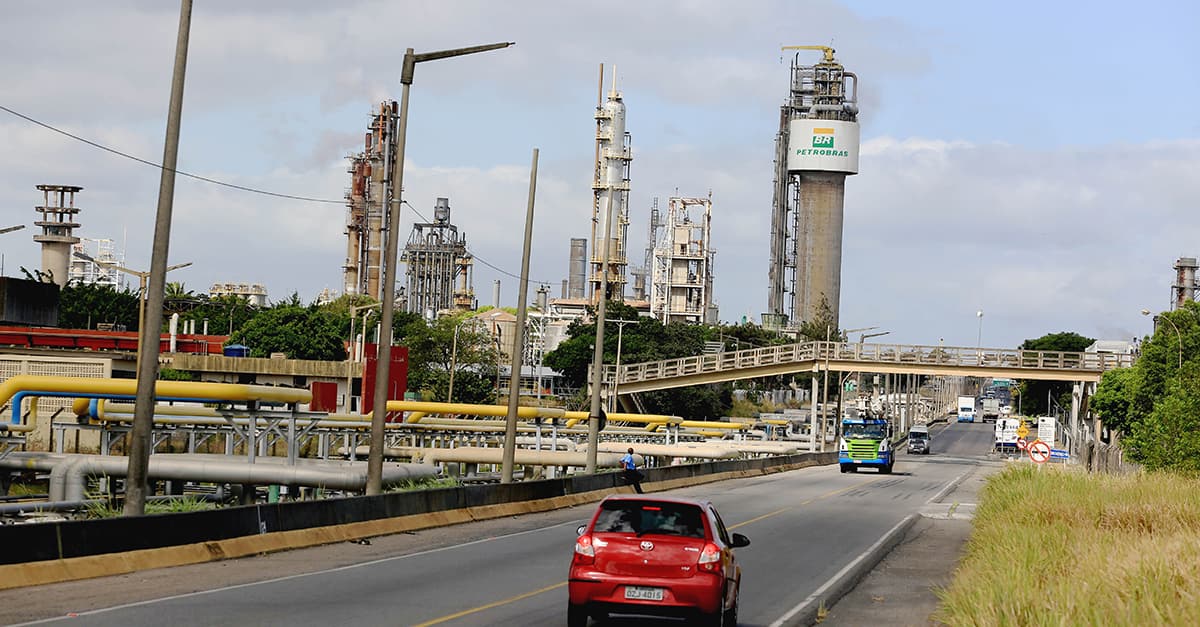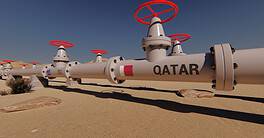Although economic growth in Latin America has slowed, a healthy energy sector is powering a recovery.

The Latin America and Caribbean region will see growth decelerate in 2022 to 2.1% after hitting an average of 6.2% last year, according to projections released in January by the Economic Commission for Latin America and the Caribbean (ECLAC).
One source of buoyancy for the region’s economies is the oil and gas sector. Oil prices in early 2022 soared above the prior year, with Brent crude topping $100 per barrel in late February as the Russo-Ukrainian conflict exploded—more than 150% above the 2020 average of $42. Fitch Ratings predicts conditions for Latin America’s oil and gas companies will stabilize in 2022, after last year’s substantial improvement, and help keep regional economies afloat.
Yet, rising energy prices create a complex situation in many Latin American countries. Increasing production will help Latin America’s energy companies—and their owners, public or private—to benefit from higher prices for exports. Higher prices mean more royalties and revenue. But when it comes to domestic supply, higher prices can also spark inflation, restrain production in other sectors and render the citizens unhappy, giving government owners incentive to sacrifice some profit for domestic peace.
“Inflation is going to have a big impact,” says John Padilla, managing director and partner at energy consultancy IPD Latin America, pointing to Mexico and Colombia as particularly vulnerable. “They are not prepared to handle it.”
Furthermore, some of the region’s biggest power-sector entities are deeply indebted and/or in need of significant capital investment before they will be able to ramp up production to take advantage of rising prices. Petrobras is engaged in a long-term semi-privatization; while Mexico addresses the Pemex debt with a range of smaller measures, including a reduced tax burden.
Pemex, like many power producers in this region, has government owners; so domestic conditions, and politics too, impact how debt is repaid and prices set. “Latin American countries are struggling with their economies,” comments Rodrigo Nishida, an economist at São Paulo–based consulting firm LCA. The Brazilian government, through Petrobras, “will probably moderate prices to keep consumption on balance,” he adds.
Yet Nishida believes that long-term underinvestment in exploration and extraction is a bigger problem than politics—one that will require significant capital expenditure (capex) to address. At the same time, many of these companies are seeking to diversify into new business lines and new geographies in order to bolster the long-term sustainability of their businesses; and those expansions, too, require capex.
Ecopetrol Expands and Upgrades
This year, Colombia’s state-owned Ecopetrol, to take one example, has allocated close to $30 million for fuel-improvement projects and $6 million for development and pilot projects in green and blue hydrogen and other technologies for application in refineries. Such improvements will help Ecopetrol reach growth close to 5% in oil and gas production this year, the company says, and allow it to maintain exports while focusing on higher-value markets to take maximum advantage of high crude prices.
At the same time, Ecopetrol will put more than $200 million into water management projects and more than $50 million into decarbonization projects, along with further investments of about $1.1 billion in energy transmission, telecommunications and road transit in Brazil, Peru and Chile.
In all, the Ecopetrol Group plans to invest $4.8 billion to $5.8 billion in 2022, with 30% spent outside Colombia—in the US as well as closer to home. The Caribbean region will be the main recipient of exploration investment—78% of Ecopetrol’s investment focused on the search for natural gas will be executed in the Caribbean.
Petrobras, Pemex and others have their own plans for investment, expansion and diversification. But will it be fast enough? The energy sector typically requires long-term investments, with payoff in four to five years. Still, the world’s energy problems are not going away.
Mastering Debt
The massive debt of Latin America’s energy producers is another impediment to their fiscal health. Some of the main oil and gas companies from the region—Ecopetrol, Petroperu, Pemex and Petrobras—need to restore their balance sheets.
Mexico’s Pemex, in particular, holds the honor of world’s most indebted oil company. Production last year ticked up just 3%, which fell short of government projections and followed many years of decline—largely due to fields aging out and a lack of exploration and development in new sources. The government under President Andres Manuel Lopez Obrador has been generous with support in a tripartite plan to reduce the company’s tax, debt and risk burdens.
In September, the government lowered the “shared utility right” tax Pemex pays from 52% to 40%. In December, it was announced that it would give the company $3.5 billion in cash to pay down debt. At the same time, the company will swap out some debt, offering bondholders the chance to trade bonds maturing in the near term (2024-2030) for new 10-year bonds plus some cash, and, separately, buying back bonds with longer-range maturities (2044-2060). The government even seeks to change the corporate structure and company management, in order to strengthen consensus around the objectives, according to Secretary of the Treasury Rogelio Ramírez de la O.
Petroperu gets similar backing, and owes its BBB+ rating from Fitch in part to the Peruvian government’s “strong incentives to support the company, as it is one of Peru’s largest liquid fuels suppliers.” Fitch also estimates that “Petroperu will maintain a structural debt above $5 billion over the rating horizon, with average leverage metrics in the range of 15x during 2021-2023, still high for the rating category.”
Petrobras, however, rather than attempting to milk the current situation to pay down debt, is engaged in a long-term piecemeal privatization, hoping to raise between $15 billion and $25 billion by selling some assets, and will overall invest $68 billion in higher-returning assets by 2026.
“There is quite aggressive divestment,” says Marcelo Assis, head of Latin America Upstream Research at energy consultancy Wood Mackenzie. “There is not full privatization, but it is a consistent strategy that will increase profitability.”
The company remains focused on rich reserves of “pre-salt” oil (buried deep under layers of rock, sand and salt below the ocean floor) that the company first explored in 2006. The Oil & Gas Journal estimates that as of January 2021, Brazil had 12.7 billion barrels of proven oil reserves, second in South America only to Venezuela.
The sale is expected to continue throughout the year. The October 2022 elections might have some impact, depending on circumstances; but the plan has lasted through contrasting administrations. “It started with President Dilma Rousseff but gained strength with Michel Temer and now Jair Bolsonaro,” Assis notes.
Rodolfo Saboia, director general of Brazil’s ANP (National Agency of Petroleum, Natural Gas and Biofuels), also states that the divestment program, by opening the local market to new players, will bring not only fresh capital, but also more competition.
“The Brazilian population is used to petroleum prices as a government decision, and it shouldn’t be like that,” says Saboia. “The more competitors we have, the better it will be for consumers.”



